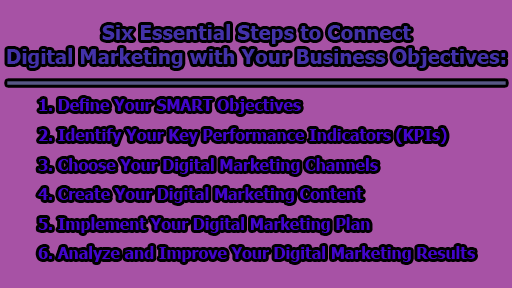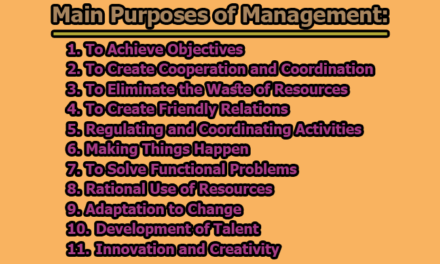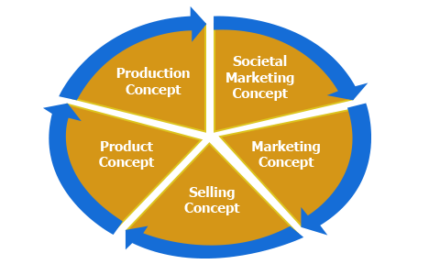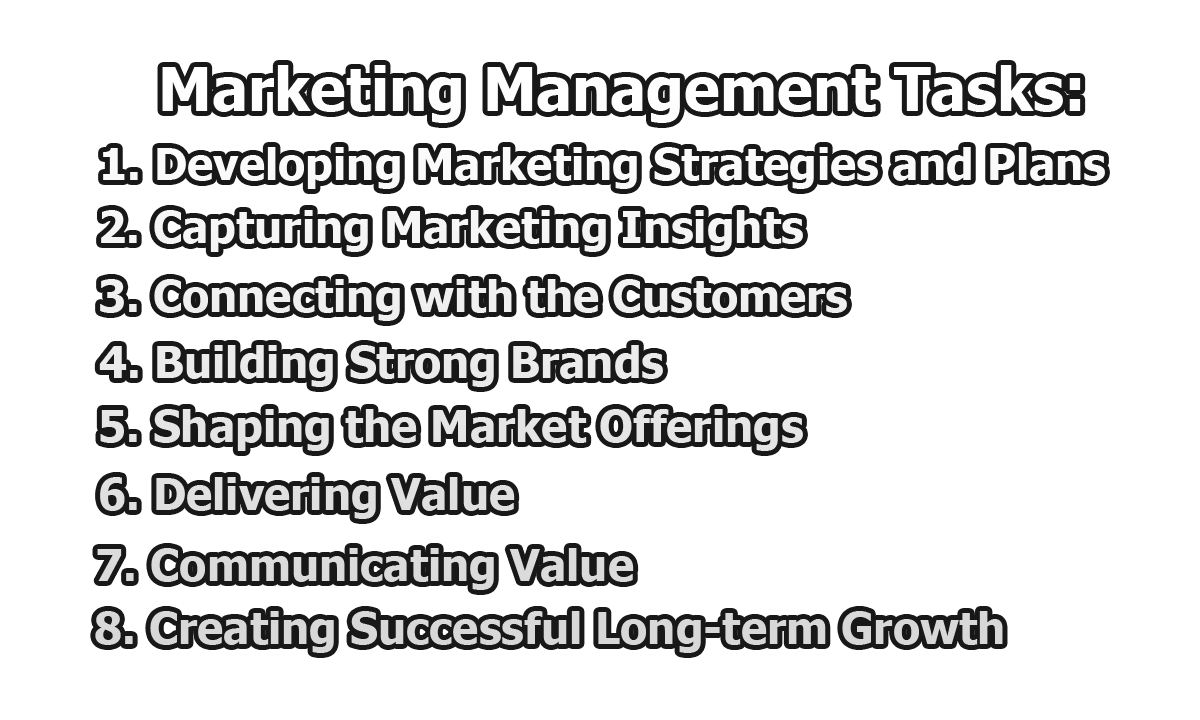Six Essential Steps to Connect Digital Marketing with Your Business Objectives:
In today’s digital age, harnessing the power of digital marketing is vital for businesses looking to thrive in a competitive landscape. However, successful digital marketing is not just about creating an online presence; it’s about ensuring that it aligns with your business objectives. Whether your goal is to increase sales, boost brand awareness, foster customer loyalty, or achieve other key milestones, you must have a clear strategy that links your digital marketing efforts to your desired outcomes. In this article, we will walk you through six essential steps to connect digital marketing with your business objectives.
1. Define Your SMART Objectives: The foundation of any successful digital marketing strategy is to define clear and SMART objectives. SMART stands for Specific, Measurable, Achievable, Relevant, and Time-bound. These objectives should be aligned with your business goals, whether that involves increasing revenue, generating leads, improving customer retention, or enhancing your brand’s reputation. SMART objectives help focus your strategy, track your progress, and evaluate your results. They provide a roadmap for your digital marketing efforts, ensuring that your actions lead directly to your intended outcomes.
2. Identify Your Key Performance Indicators (KPIs): Once you’ve established SMART objectives, the next step is to identify your Key Performance Indicators (KPIs). KPIs are the measurable metrics that indicate how well you are progressing toward your SMART objectives. These metrics could include conversions, click-through rates, bounce rates, social media engagement, and more. By monitoring your KPIs, you can gain insights into the effectiveness of your digital marketing campaigns, identify strengths and weaknesses, and make data-driven decisions to optimize your strategies.
3. Choose Your Digital Marketing Channels: There is an abundance of digital marketing channels to choose from, including websites, blogs, email, social media, search engines, online ads, and video platforms. The key to success is selecting the channels that align best with your SMART objectives and KPIs. Consider your target audience, budget, messaging, and purpose when choosing your channels. Tailoring your channel selection to your specific goals will ensure that you reach and influence your potential and existing customers effectively.
4. Create Your Digital Marketing Content: Your digital marketing content is the heart of your strategy, responsible for attracting, informing, persuading, and converting your audience. Content can take various forms, such as text, images, audio, video, or interactive elements. It is essential to create content that is not only relevant and engaging but also consistent with your brand identity and tone. Content should reflect your business values and deliver a clear value proposition to your audience. The quality and consistency of your content are critical to maintaining a strong online presence.
5. Implement Your Digital Marketing Plan: To make your digital marketing strategy a reality, you need to implement it effectively. This involves setting up the necessary digital marketing tools and platforms, scheduling and publishing your content, managing and interacting with your audience, and continually testing and refining your tactics. Implementation requires efficiency, accuracy, and creativity to ensure that your strategy unfolds as planned.
6. Analyze and Improve Your Digital Marketing Results: After you’ve implemented your strategy, it’s crucial to analyze and improve your digital marketing results continually. This involves collecting and interpreting data, comparing your performance against your KPIs and industry benchmarks, and identifying what worked and what didn’t. By evaluating your results with honesty, curiosity, and innovation, you can make data-driven improvements to your strategy. This iterative process will help you stay on track and continuously optimize your digital marketing efforts to better align with your business objectives.
In conclusion, digital marketing is a powerful tool for reaching and engaging your target audience, but it must be strategically linked to your business objectives to yield the best results. By following these six steps – defining SMART objectives, identifying KPIs, choosing the right channels, creating quality content, implementing your plan, and analyzing and improving your results – you can ensure that your digital marketing efforts align with your goals and contribute to your business’s success. In a rapidly evolving digital landscape, this approach will help you stay ahead of the competition and maximize your online impact.

Former Student at Rajshahi University










